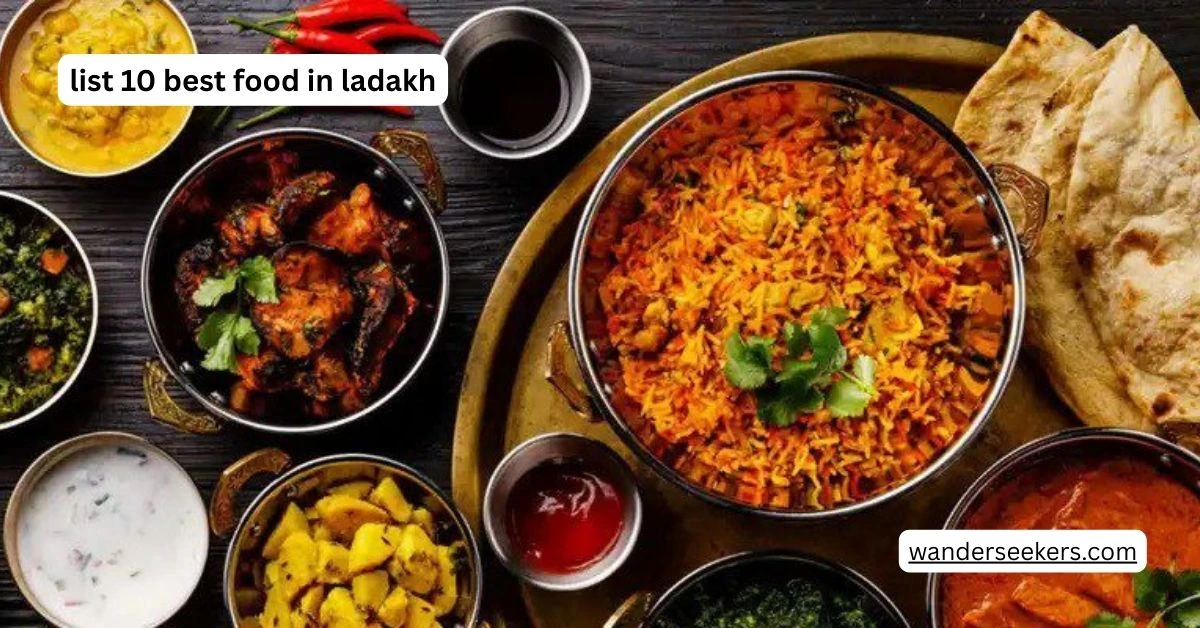The region’s extreme climate, Buddhist culture, and Tibetan influences. The food here is designed to provide warmth, energy, and nourishment while delivering bold, distinct flavors. In this article, we’ll explore ten must-try Ladakhi dishes, diving into their history, preparation methods, cultural significance, and the unique flavors that make them special.
Table of Contents
1. Thukpa – The Hearty Noodle Soup
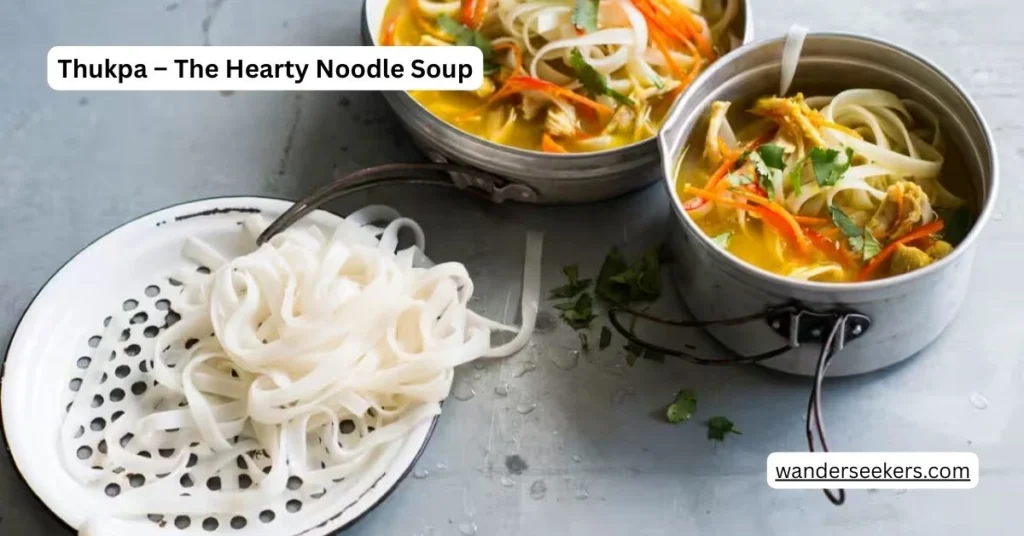
Thukpa is a signature noodle soup dish with Tibetan origins that has become a staple in Ladakh. This comforting meal consists of handmade wheat noodles submerged in a broth infused with fresh vegetables and either mutton or chicken. Seasoned with garlic, ginger, chilies, and herbs, Thukpa provides warmth and sustenance, making it a favorite among locals, especially during the harsh winters.
2. Momos – The Classic Dumplings
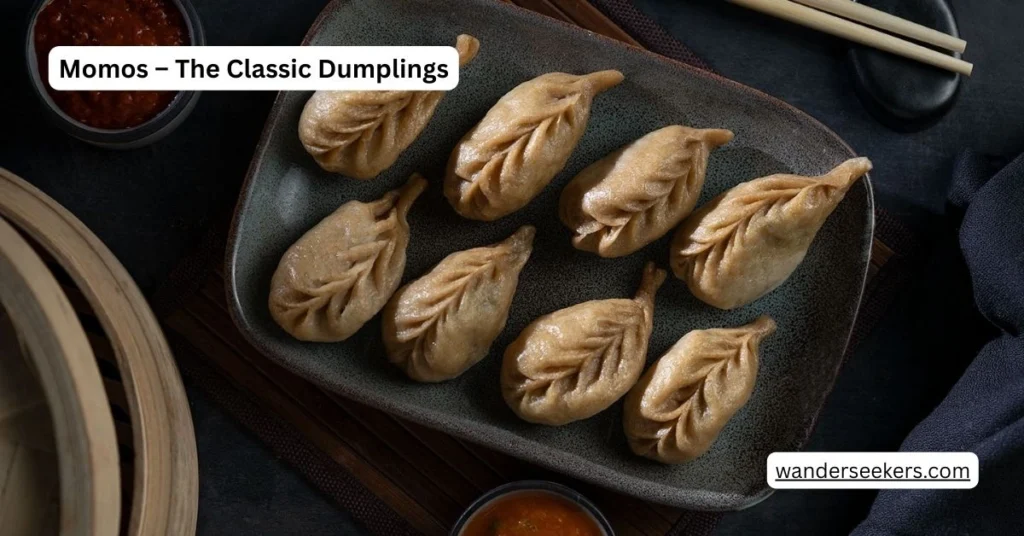
Momos, perhaps the most popular snack in Ladakh, are filled dumplings served either steamed or fried. Traditionally stuffed with minced meat (mutton or yak), vegetables, or paneer, these dumplings are complemented by a fiery chili and tomato chutney. The combination of soft, flavorful filling with the slight chewiness of the dough makes momos irresistible.
3. Skyu – The Ladakhi Wheat Stew
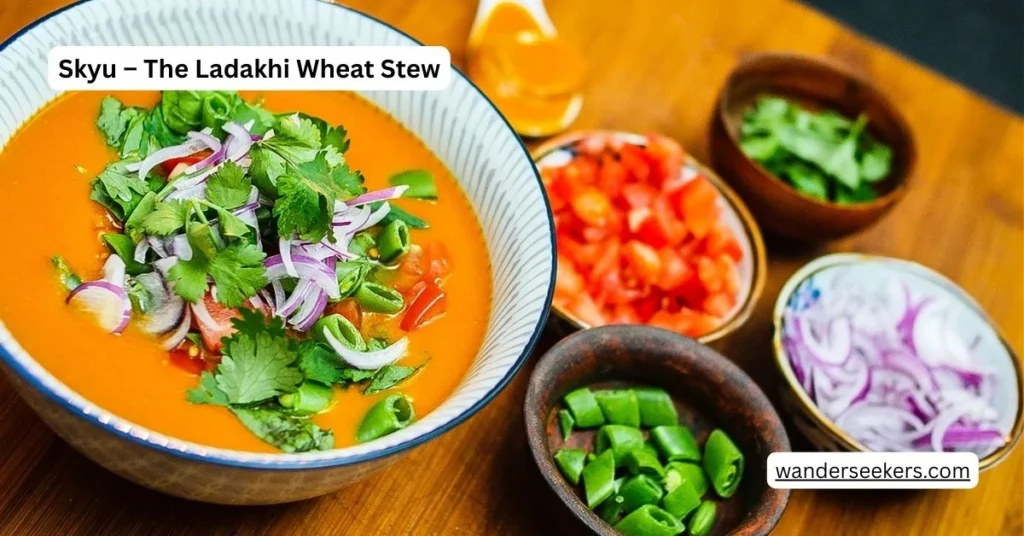
Skyu is a traditional Ladakhi stew that reflects the simplicity and heartiness of Ladakhi cuisine. Made by kneading wheat flour into small dumpling-like pieces, Skyu is slow-cooked with root vegetables such as potatoes, carrots, and turnips. Often enriched with butter and milk, this dish provides the nourishment needed for high-altitude living.
4. Chhutagi – The Unique Bow-Tie Pasta
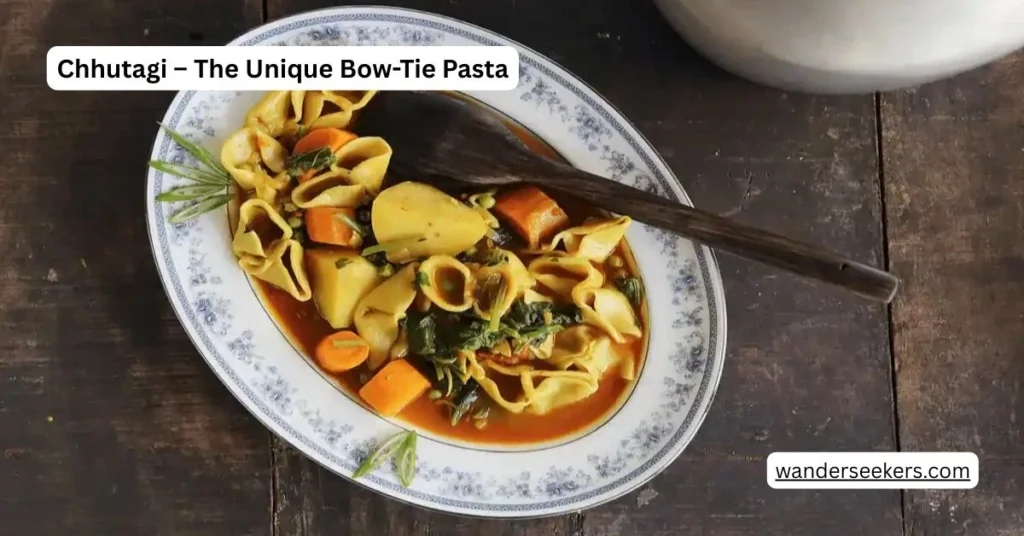
Chhutagi is a traditional Ladakhi pasta dish, known for its bow-tie-shaped wheat dough cooked in a hearty soup. The name “Chhutagi” translates to “water bread”, reflecting its preparation method. This dish is a staple in Ladakh’s cold climate, offering warmth and nourishment. The pasta is hand-rolled and shaped into small bow-ties before being simmered in a flavorful broth made with seasonal vegetables like potatoes, carrots, spinach, and radish, or sometimes mutton for a richer version. The broth is infused with garlic, onions, black pepper, and local spices, creating a comforting and wholesome meal.
5. Tigmo – The Fermented Bread Delight
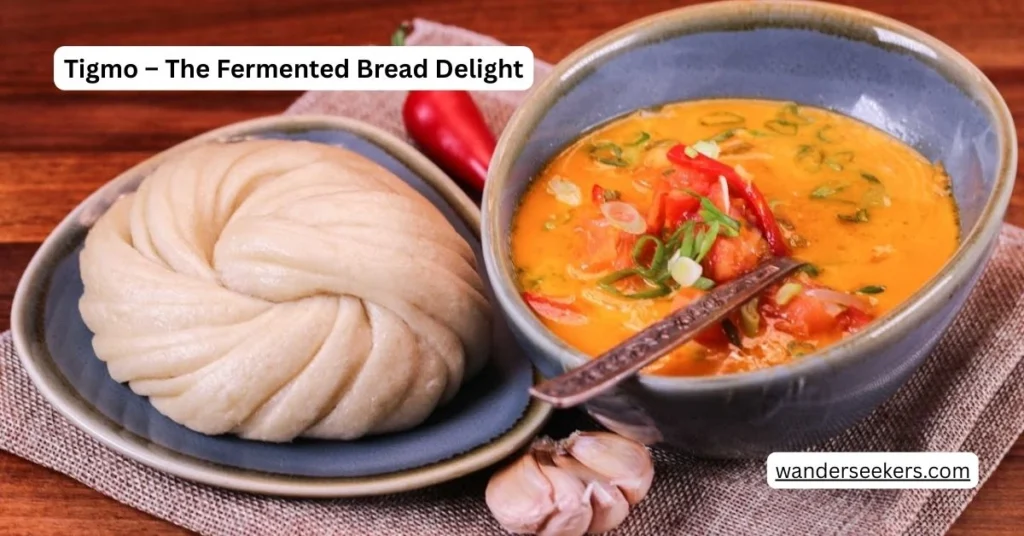
Tigmo, also known as Tingmo, is a traditional Tibetan steamed bread, cherished for its soft, fluffy texture and versatility. Unlike conventional bread, Tigmo is fermented, giving it a slightly tangy taste and a light, airy consistency. It is made using all-purpose flour, yeast, salt, and sugar, kneaded into a dough, and left to rise before being steamed into delicate, layered rolls. This bread is often served alongside spicy Tibetan curries, such as Shapta (stir-fried meat) or vegetable stews, allowing it to absorb the rich flavors of the dish.
6. Ladakhi Pulao – The Aromatic Rice Dish
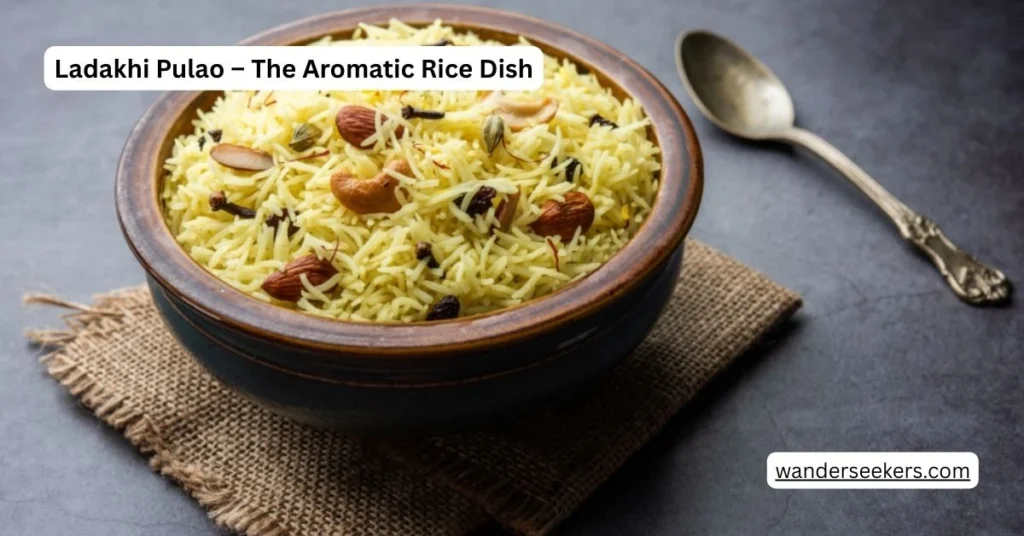
Ladakhi Pulao is a fragrant and mildly spiced rice dish from the cold desert region of Ladakh, known for its rich aroma and subtle flavors. Unlike other pulao varieties, it is cooked using mutton stock, which infuses the rice with deep, meaty flavors. The dish is prepared with long-grain basmati rice, slow-cooked with caramelized onions, carrots, and dry fruits like almonds, cashews, and raisins, adding a delightful sweetness and crunch. Whole spices such as shah jeera, cinnamon, cloves, and black cardamom enhance its warmth, making it a comforting meal in Ladakh’s chilly climate.
7. Khambir – The Local Whole Wheat Bread
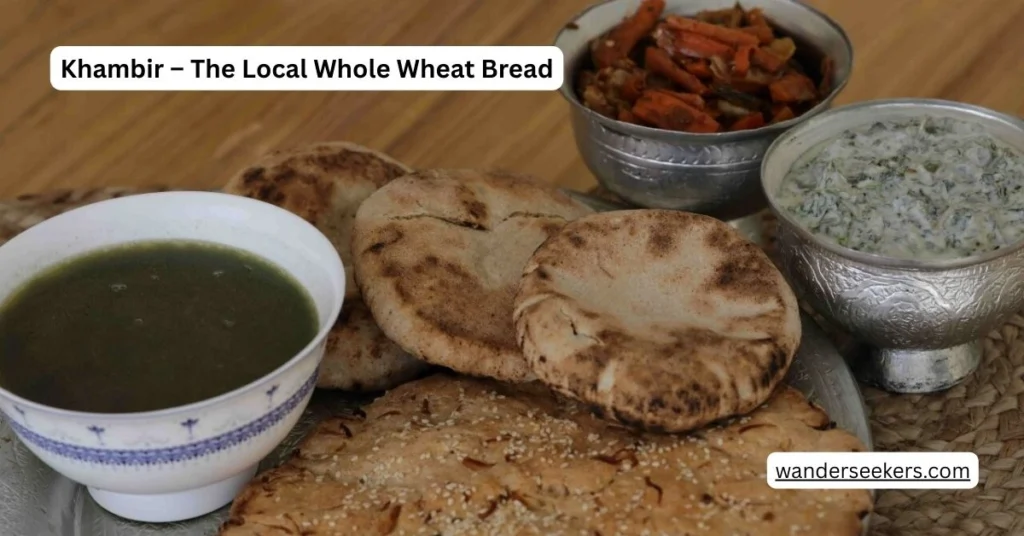
Khambir is a thick, crusty whole wheat bread that serves as a staple in Ladakhi households. Traditionally baked in wood-fired ovens, it has a chewy texture and a slightly nutty taste, making it the perfect accompaniment to butter tea or spicy curries. This bread is a key part of Ladakh’s food culture, often eaten with homemade butter or vegetable stews.
8. Butter Tea – Ladakh’s Energy Drink
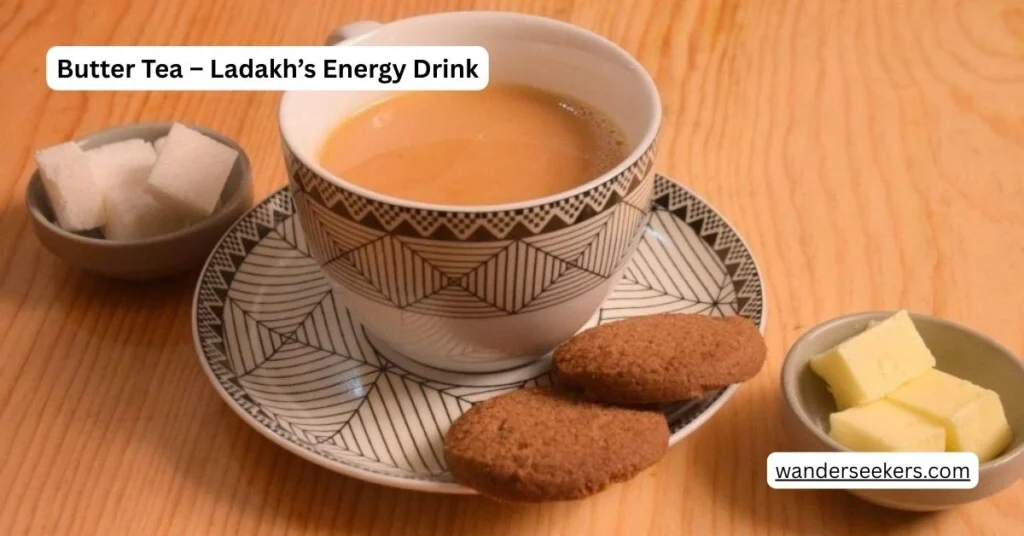
Butter tea, or Gur Gur Chai, is an essential Ladakhi beverage made from yak butter, salt, tea leaves, and water. Unlike the sweetened Indian chai, this tea is creamy and salty, designed to provide warmth and energy in the freezing climate.
9. Chhang – Ladakh’s Indigenous Alcoholic Beverage
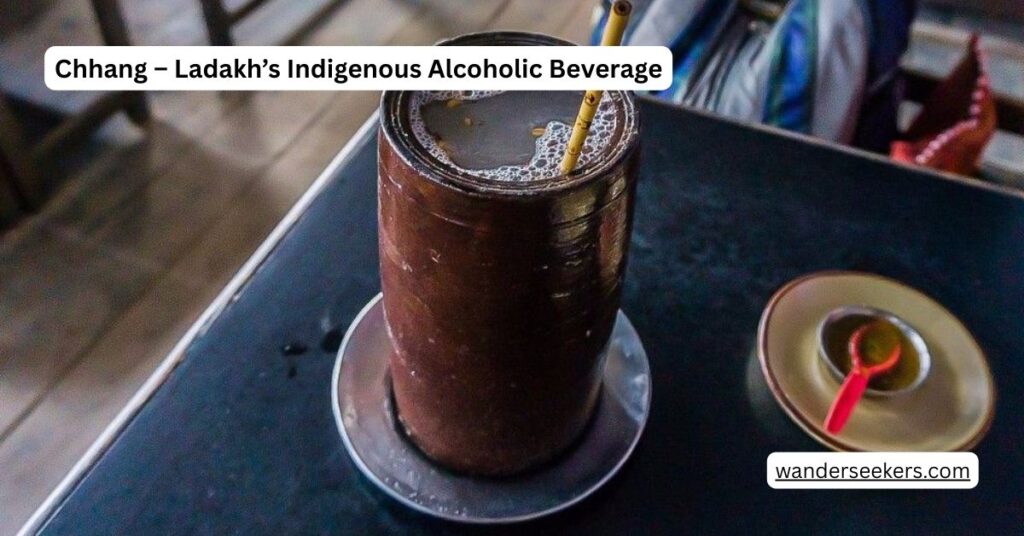
Chhang is a locally brewed alcoholic drink made from fermented barley. Lightly alcoholic with a slightly tangy taste, Chhang is a central part of Ladakhi celebrations and rituals. This drink is often enjoyed at festivals and gatherings, offering warmth and cheer.
10. Saag – The Simple Yet Flavorful Spinach Dish
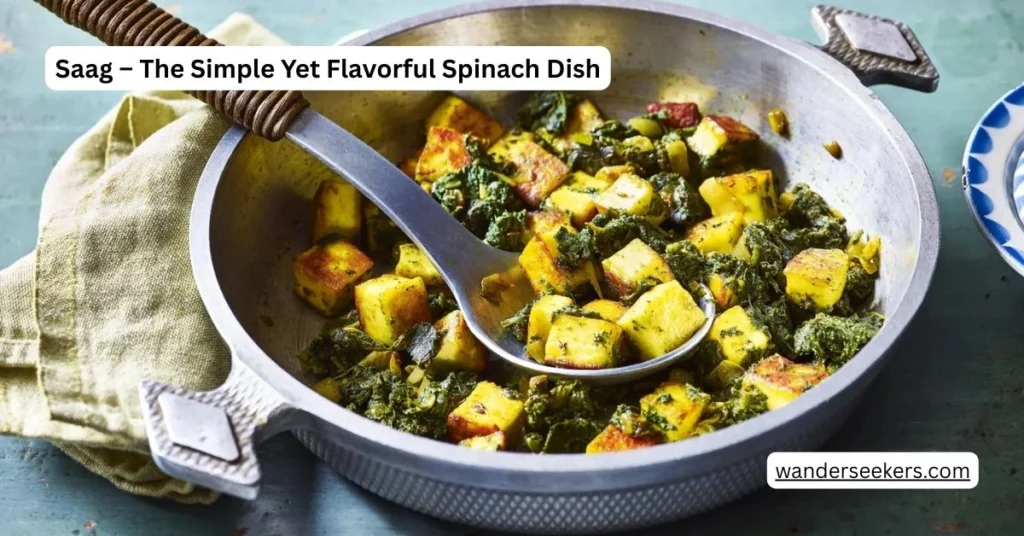
Saag is a simple yet delicious dish made from locally grown spinach or mustard leaves. Prepared with garlic, chilies, and mustard oil, Saag retains its fresh, earthy flavors and essential nutrients. Often eaten with rice or Khambir bread, this dish is a staple in Ladakhi households.
